Annie and Briana: On Track and Feeling Awesome
Published on February 21st, 2016
Annie Haeger and Briana Provancha hope to represent the US in the Women’s 470 event at the 2016 Olympics. If they are successful, they will look back at the 2007 Youth World Championship when they both stood on the podium. Briana got gold in 29er. Annie got silver in Laser Radial. Olympic dreams took form that day.
Annie and Briana, now 25 and 26, are legitimate medal contenders. In 2015, after finishing third in the 470 Europeans, they won the Olympic Test Event in Rio. As they prepare for 2016 470 World Championship on February 22-27, Annie and Briana discuss their program with Scuttlebutt editor Craig Leweck…
When did you first step into the boat?
Briana: I did a little bit of sailing with Molly Carapiet during college, and ended taking some time off school, delaying my graduation from 2011 to 2012.
Annie: I went out to San Diego with Briana in November 2010 to give it a try, to see if we liked it. We did, so we got a little organized which resulted in getting to Europe for some summer events in 2011, and then once we both graduated in 2012 we’ve been full on.
Briana: I think something that’s really important is before Annie and I did an event, we already really knew each other. We sailed together at Boston College and knew a lot about each other’s personalities. We had success too, skippering opposite each other to win 2012 Women’s Nationals. I think being able to sail with somebody and know that you’re a good team before you start this journey is really important. And also doing it with somebody that you’re friends with makes all the road trips and everything a little bit easier. Plus, you trust the person with everything you have, you know? For those tough decisions that you have to make, I think that helps a lot.
So the summer of 2012 was game on.
Annie: We jumped into my car in Wisconsin and road-tripped south with the coach boat and we were talking the whole time in the car like, “What do you think it’s going to be like in four years?” We had no idea. No clue. I think if we were looking at percentages of knowledge we were in the negative. We just had no idea. We were sending emails out to everyone about what to even have in the tool box, when if you’re ordering a boat, what to have on the boat. Briana had sailed with Molly so she had a little bit of a clue.
Briana: A little bit of a clue meaning like I could put the sails up [laughter].
Annie: That’s better than I could do.
The 470 is a super technical boat to sort out. How big a leap was this?
Briana: The International 420 is the closest boat to transition from, but when I went to the Youth Worlds in the 420, I showed up and didn’t even realize the spreaders were adjustable. We were so not prepared. Compare that to the level USA is at now in the class, these kids are so dialed in. Last year USA won the 420 Europeans and the Youth Worlds. We’re super proud of the youth team, and this next generation of Olympians will be far more prepared for their campaigns.
So what did it take to figure out the 470?
Annie: When we were starting out, we had to fully understand the impact of every control in the boat. We had to make the connections with how the boat felt to how it correlated to the sails and tune. This had to become automatic – we couldn’t be tinkering with each toy that’s in the cockpit. We had to understand what each control does, and how the sail moves, and how they interact with each other. This process of learning allows you to hone in to make the adjustment, the proper adjustment, to make the boat quicker. We were starting from ground zero but fortunately had the wealth of knowledge with all the coaches that we’ve had along the way. It just seems honestly like it’s time in the boat. I know I hate to say that.
Briana: With every little change in sailing conditions, the boat goes a different speed. So learning what top speed feels like all the time is huge. If a change is needed, you can’t hesitate. The longer you wait, the further behind you fall. When we really started learning about our speed, that was a big deal for us.
So for anyone looking at the 470, is the I-420 a valuable step to have already taken?
Briana: Yes, but I would also tell people not to be afraid if you’re starting from ground zero. The 470 is a wonderful boat, and if you have the right team around you, you’ll be successful. I think there’s a lot of people that get discouraged by the 470, the thought of it, how complicated it is, the crew weight component. But if you enjoy it, I think if it’s something that makes you happy, I say go for it.
Success at the Olympic level is more than just the racing. You all had to quickly become adept at the travel and logistics.
Briana: Everything seems like it’s different everywhere. Dealing with shipping or buying a car for transport. Simple things like trailer hitches and roof racks are hurdles. One of my funniest stories from traveling was with a US men’s team that will remain nameless, where, they drilled holes in the rental car roof to transport a boat. Seeing their solution, I was like, “Is this serious?” And they’re like, “This is not even the half of it.” And I’m like, “Okay.”
Annie: You do what you got to do.
Briana: I learned right then and there. I said, “Oh, this is going to be fun.”
You got to learn to be flexible. Does that mean you are Type A or Type B?
Annie: Type A
Briana: I’m pretty Type A
Annie: Yeah, we’re both type A.
That’s the cool type, isn’t it?
Annie: Yeah, right. Thank you.
Briana: I think if any US sailing team coach heard the term “flexible” used to describe our team they’d be shaking their heads. But we’re trying.
Annie, your youth years on Lake Beulah in Wisconsin is a long way from Guanabara Bay in Rio. What was it about the inland lakes that has helped you?
Annie: With the scows you can add crew as the wind increase, so when I was younger I would be extra weight for guys like Andy Burdick or Harry Melges. I learned so much from seeing their intuition and how it guides them without having to think through a lot of decision making. The inland lakes teach you how to trust your gut, because if you overthink things, your opportunity is lost and people that were once around you are now halfway up the lake by the time you clue into what the conditions are.
Going upwind, the 470 crew looks to be bouncing from the trapeze wire. What’s going on?
Briana: It’s like air-humping. Like humping air [laughter], I guess. I don’t know how else to say it. You’re moving your hips in hopes of fanning the sail. The O flag has to be up, so it has to be a least eight knots, consistently. The men’s fleet is more active than the women’s fleet. There are some conditions where you just want to go, but there’s also some conditions where it doesn’t feel that great.
Downwind, the helm steers from the leeward side. Was that an awkward transition?
Annie: In college, traditionally the skipper sits to windward and holds the jib out to wing and wing. But I had experimented with sitting to leeward and for some reason I was able to feel the boat a little bit better when I was sitting there, and had an easier view of the waves and wind. So the transition to helming downwind in the 470 was pretty easy.
With the Olympic Games six months away, your team seems well positioned. Did you imagine your progress would come so soon?
Briana: There’s definitely a lot of teams out there that are quite good, and that have been more dominant at events than we have. But definitely, I think we’re in the exact place we want to be right now, and had I thought that four years ago, this is what I would have hoped fort. I think every day you work hard, and you think about that moment, where you want to be. I hope everybody does that in life with any goal you have. So yes, we’re on track and it’s an awesome feeling.
I can’t close our chat without mentioning one of my favorite people and your coach, Dave Ullman. What’s his involvement meant for your team?
Annie: Dave is a great sounding board. He has a vision of how a program should go, and he’s been very successful with that vision. He is able to look at different people’s boats, different people’s set-ups, and effectively feed the information back to us. That’s a huge strength in a coach and he does a great job with it. Sometimes it’s a little struggle with the generation gap, to be quite honest. We had to teach him what a selfie was. We actually taught him what twerking was. Poor guy, I feel bad for him. But we’ve really been able to take a lot away from that relationship, and feel very fortunate that he’s been working with us.
Dave doesn’t have daughters. Do you feel like daughters?
Briana: In a way. We bicker sometimes.
Annie: Hmm, maybe more like granddaughters. Love you, Dave.


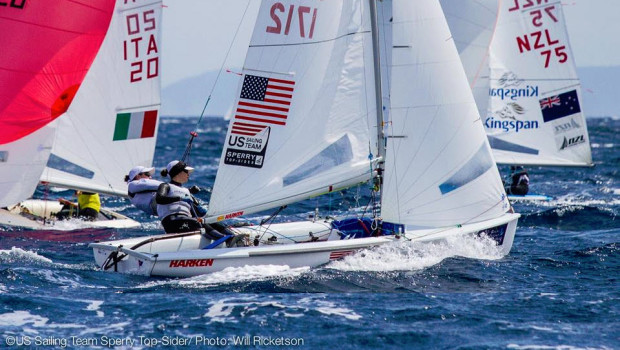

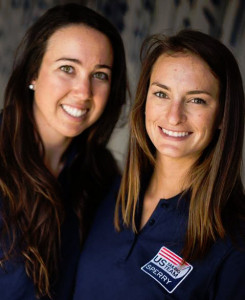
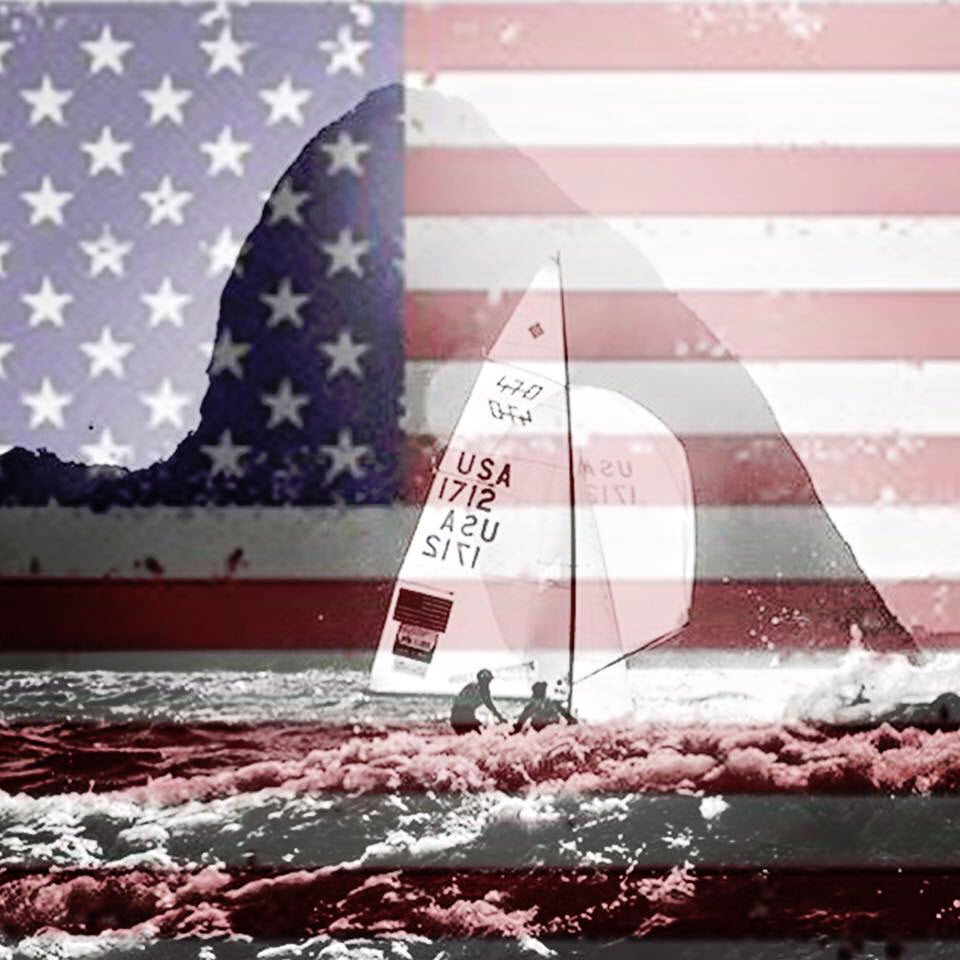

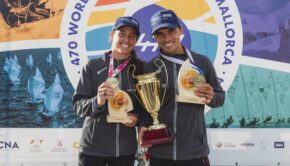
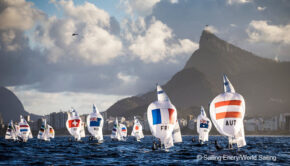
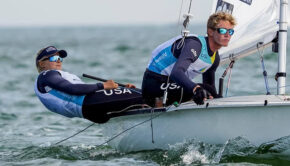
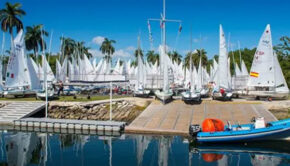
 We’ll keep your information safe.
We’ll keep your information safe.